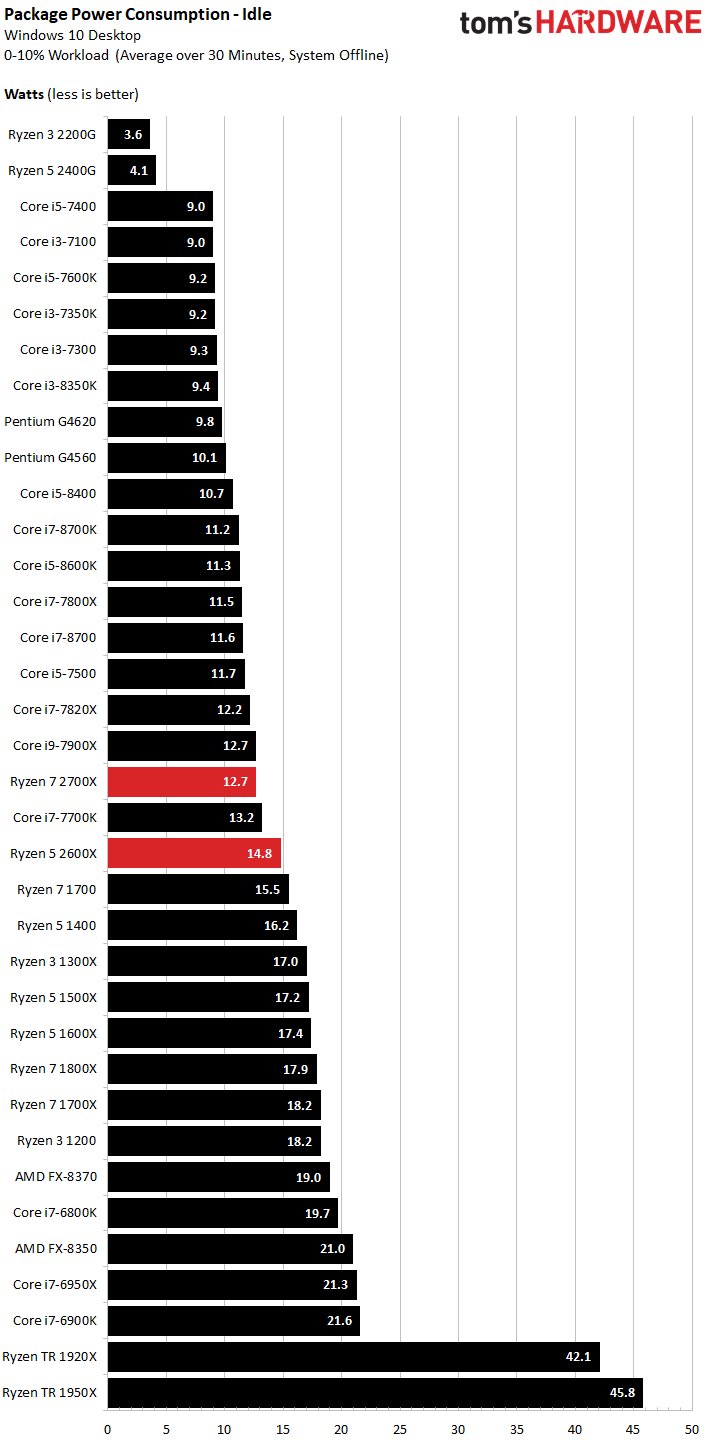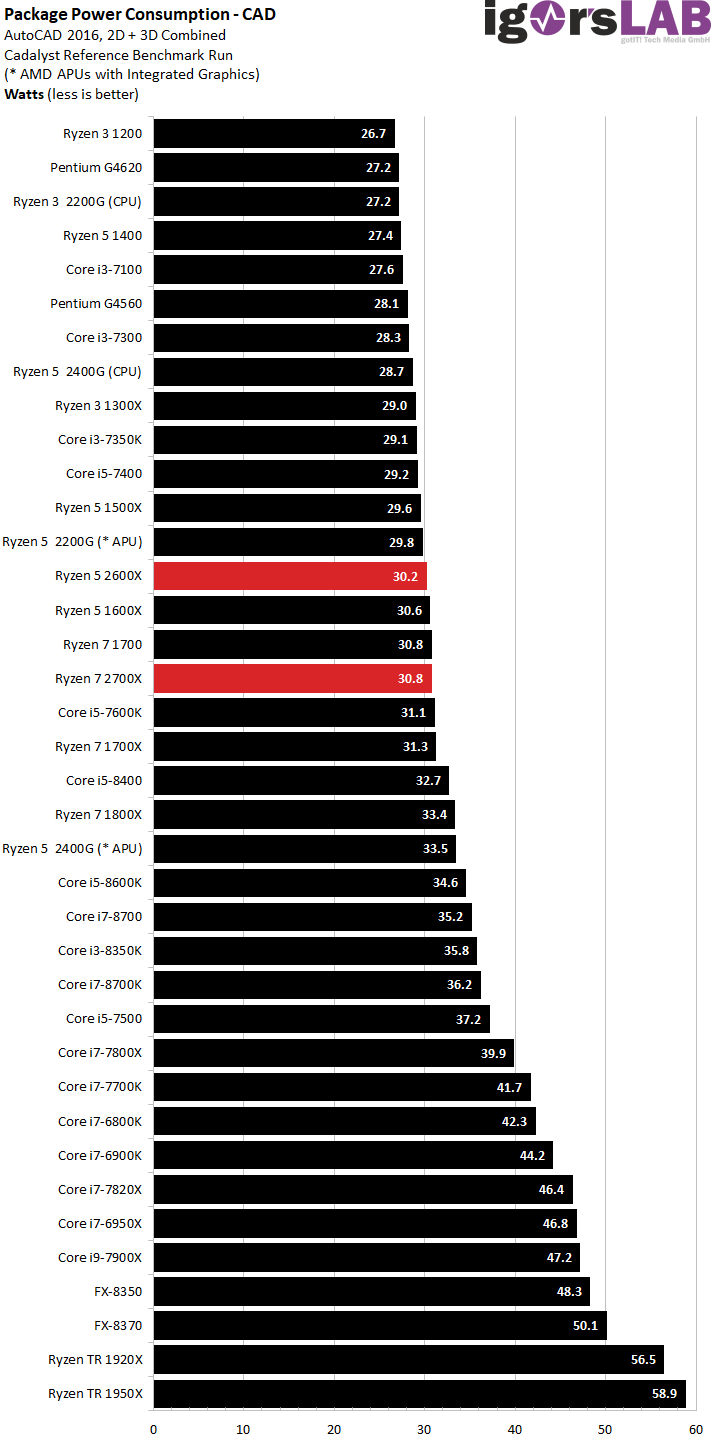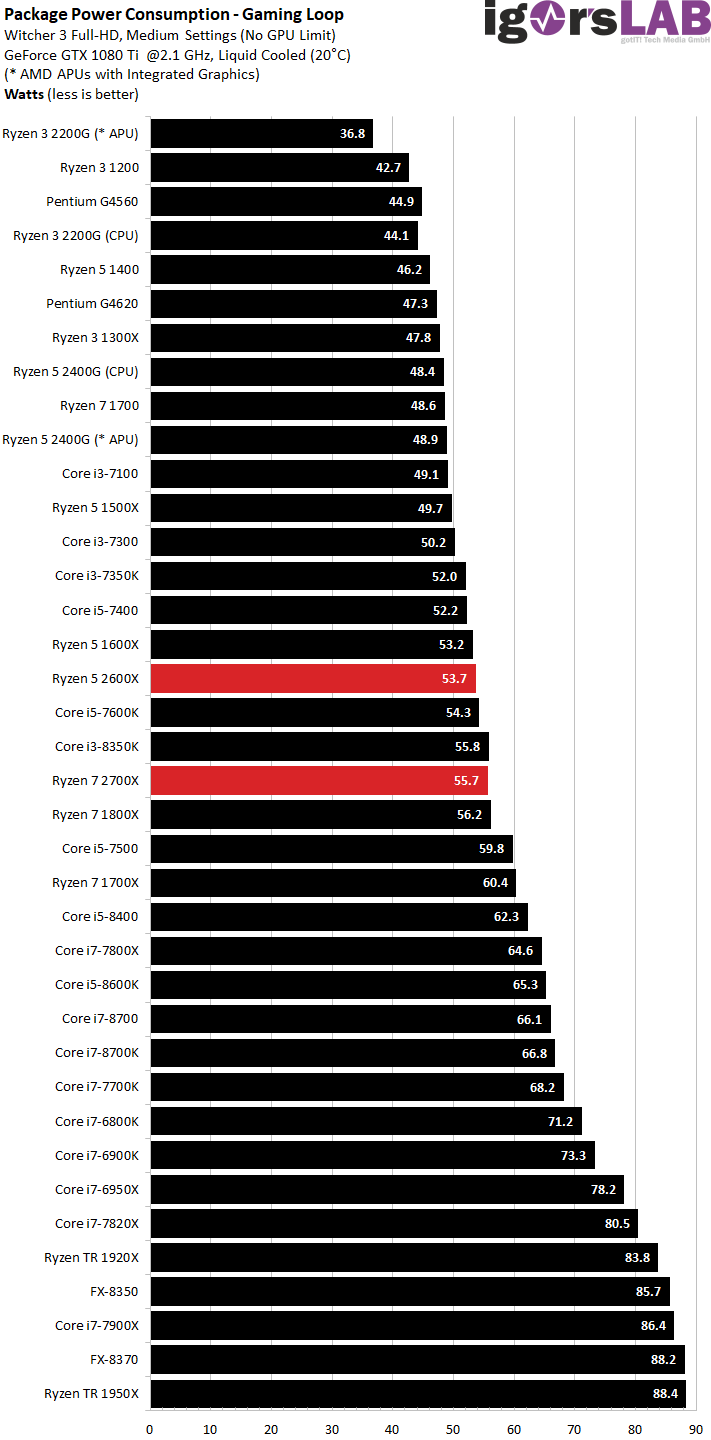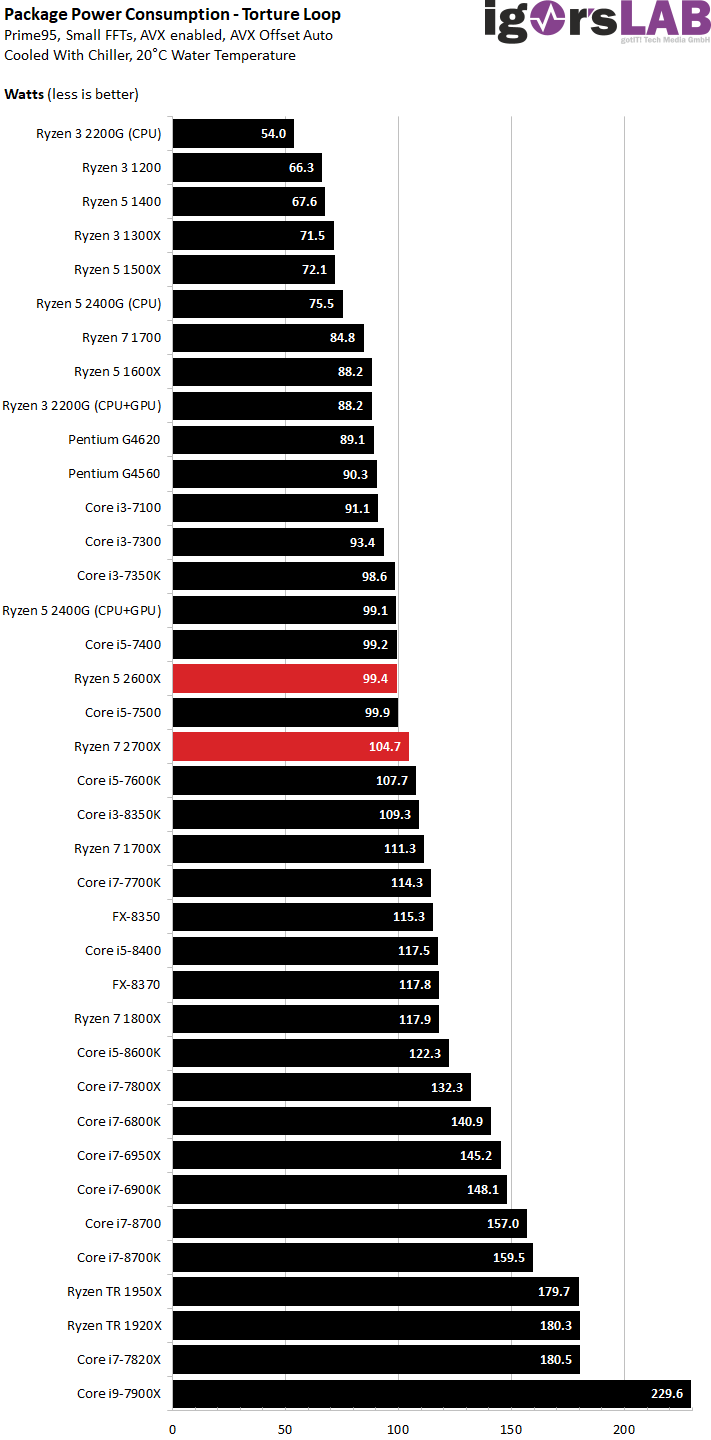We determine the power consumption in a total of four typical scenarios. In contrast to the CPU selection of the individual tests, we have summarized significantly more CPUs from our previous tests this time, because we believe that a more comprehensive overview in this area can never hurt. In terms of power consumption, we can also exclude driver-related deviations, as the measurements were made on the most up-to-date platform.
In the idle, the Ryzen 7 2700X is just below the Ryzen 5 2600X, which we would clearly pin down to the slightly better chip quality of the larger CPU, because the adjacent voltages were identical. However, the 2 watt difference hardly matters. It is astonishing, however, that the two APUs still perform significantly better due to the different internal structure.

With the lighter CAD workload, the two new CPUs are better in the race in terms of performance and power consumption than their two direct predecessors. However, this also shows that the higher clock was not bought by a higher power consumption, but that both factors could be improved. All in all, therefore, progress is already being felt.

We also find a similar picture in gaming, whereby the performance increase is again more pronounced than the differences in power consumption.

In the stress test, both CPUs then act much more cautiously than the direct predecessors, which we would attribute above all to XFR2 together with the significantly more delicate graded clocking and voltage specification. The clock of both new CPUs was always stable above the 4 GHz limit in the stress test, so that one could not attribute this progress to a more restrained AVX offset.

Intermediate conclusion
Performance up, power consumption (slightly) down. It's not a new galaxy yet, but the improvements aren't just on the PR slides, you can experience it for yourself and measure it demonstrably. This means that the Refresh more than lives up to its image.
- 1 - Ryzen Reloaded
- 2 - Das X470 Chipset und Ryzen Master 1.3
- 3 - Cache und Speicher-Performance, IPC
- 4 - Overclocking, Spectre und Test-Setup
- 5 - Gaming: CPU Performance
- 6 - Gaming: Ashes of the Singularity Escalation
- 7 - Gaming: Civilization VI
- 8 - Gaming: Warhammer 40K: DoW III
- 9 - Gaming: Grand Theft Auto V
- 10 - Gaming: Hitman (2016)
- 11 - Gaming: Middle-earth: Shadow of War
- 12 - Gaming: Project Cars 2
- 13 - Gaming: Far Cry Primals
- 14 - Workstation: GPU Performance
- 15 - Workstation: CPU Performance
- 16 - XFR2 vs. manuelle Übertaktung
- 17 - Leistungsaufnahme
- 18 - Temperaturen und Lautstärke
- 19 - Zusammenfassung und Fazit
































Kommentieren